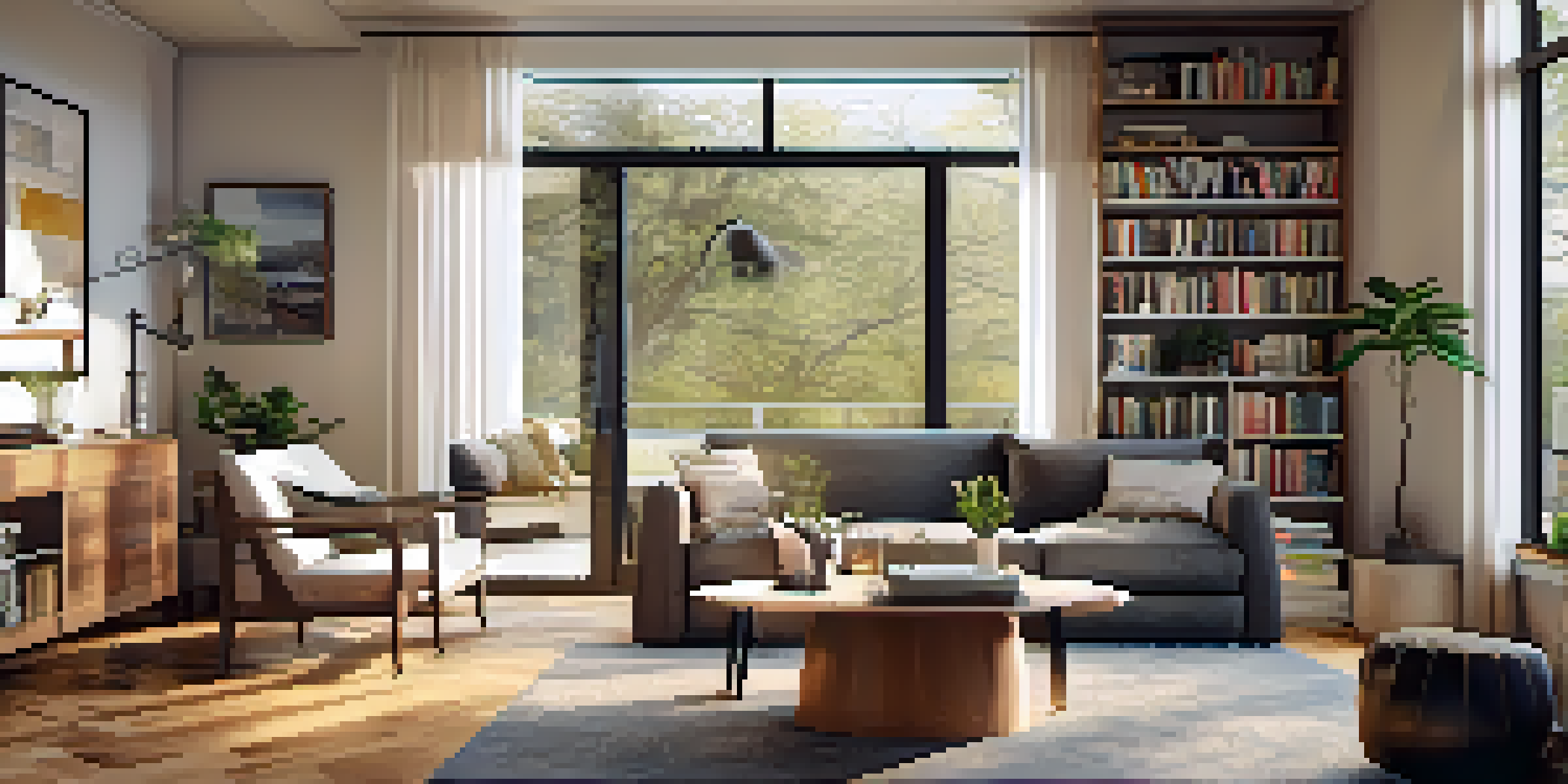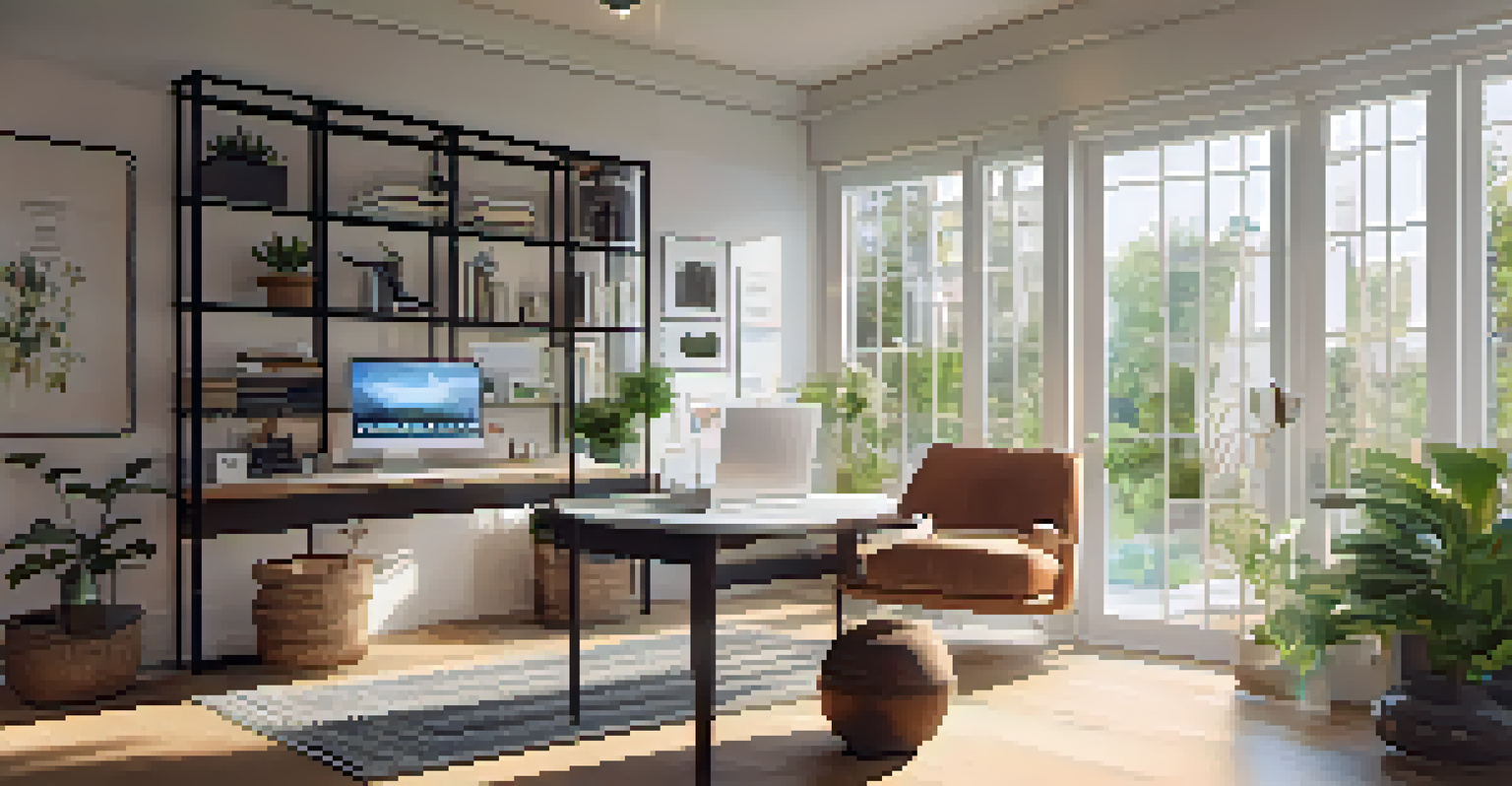Rethinking Room Dividers in Open Concept Homes

Understanding Open Concept Living Spaces
Open concept homes have surged in popularity, thanks to their airy feel and social atmosphere. They allow for a seamless flow between spaces, making them ideal for entertaining and family gatherings. However, the lack of defined areas can sometimes lead to chaos, especially in larger homes. This is where room dividers come into play, helping to create functional zones without sacrificing that open vibe.
The best rooms have something to say about the people who live in them.
When we think of open concepts, we often picture vast spaces that can feel overwhelming. But with a little creativity, you can design areas that are both cozy and inviting. Room dividers can serve as visual cues that guide movement and interaction while still allowing light to filter through, preserving that spacious feel. By rethinking how we use dividers, we can enhance the overall aesthetic and functionality of our living areas.
For instance, consider using bookshelves or plant walls as dividers. Not only do they define spaces, but they also add character and warmth. By strategically placing these elements, you can create nooks for reading, working, or relaxing, all while maintaining an inviting atmosphere. This approach marries the benefits of open living with the comfort of defined spaces.
Types of Room Dividers to Consider
There’s a plethora of room divider options available, each offering a unique flair and functionality. From sliding doors and curtains to decorative screens and shelving units, the choices are virtually limitless. Each type can contribute to the overall design, helping to delineate areas without blocking light or creating a claustrophobic feel. Choosing the right divider for your space can significantly enhance its usability and style.

For example, a folding screen can easily be repositioned and stored away, offering flexibility for changing needs. On the other hand, a permanent installation, like a half-wall or built-in shelving, provides a more structured approach. Think about how you use your space and what will work best for your lifestyle when selecting a divider. This ensures that your choice aligns with both functionality and aesthetics.
Enhance Spaces with Room Dividers
Room dividers can create functional zones in open concept living, helping to maintain an airy feel while adding character.
Additionally, don’t overlook the potential of plants as natural dividers. Vertical gardens or strategically placed potted plants can create a beautiful barrier while improving air quality and adding a touch of nature indoors. They can soften the visual lines in a space and bring life to even the most modern designs.
Maximizing Natural Light with Dividers
One of the biggest concerns with room dividers is how they can block light. However, thoughtful design can enhance illumination rather than diminish it. Transparent materials, like glass or acrylic, can be used to construct dividers that allow light to pass through while still providing a sense of separation. This approach ensures that your home remains bright and airy, even with dividers in place.
Space is the breath of art.
For instance, consider using frosted glass panels for a bathroom or office area. They provide necessary privacy while allowing light to flow into adjacent spaces. Alternatively, open-shelved dividers can create a sense of division while maintaining that coveted openness, ensuring your rooms feel connected rather than closed off.
Incorporating mirrors into your divider design is another clever trick. Mirrors can reflect light and create an illusion of depth, making your space feel larger and more open. This technique not only serves a practical purpose but also adds a decorative element to your home.
Incorporating Functional Furniture as Dividers
Functional furniture can be a game-changer when it comes to rethinking room dividers. Items like sofa backs, console tables, or even desks can act as boundaries between different areas. This dual-purpose approach not only maximizes space but also adds to the overall design aesthetic of your home. It’s all about merging functionality with style.
For example, a stylish bookshelf can serve as a room divider while also providing storage for books, decor, and personal items. It creates a cozy reading nook while effectively separating the living area from the dining space. This type of design not only looks great but also enhances the usability of your home.
Maximize Light with Transparent Design
Using materials like glass and mirrors for dividers can enhance natural light flow and create an illusion of spaciousness.
Moreover, consider using furniture that can be moved easily. A lightweight room divider that doubles as a side table or a bench can be adjusted according to your needs. This flexibility is especially beneficial in open concept spaces where the function may change from day to day.
Color and Texture: Setting the Mood
Color and texture play a crucial role in defining spaces within an open concept home. By choosing different colors or textures for your dividers, you can create distinct areas that feel separate yet cohesive. For instance, a bold, dark color can signify a cozy reading area, while lighter tones can keep the atmosphere feeling fresh and open.
Textures can also help to establish boundaries. A plush fabric divider can create a warm, inviting feel, while sleek metal or wood can lend a modern touch. Mixing and matching different materials can enhance the overall design, allowing you to express your personal style while effectively separating spaces.
Additionally, consider incorporating patterned fabrics or wallpapers on your dividers. These design elements can introduce visual interest and personality to your home. It’s a simple yet impactful way to elevate your space without overwhelming it.
Creating Zones for Different Activities
One of the primary reasons for incorporating room dividers is to create designated zones for various activities. Whether it’s a home office, a play area for kids, or a cozy corner for relaxation, dividers can help clarify the purpose of each space. This intentional separation can lead to better organization and improved functionality in your home.
For example, if you work from home, setting up a divider between your workspace and living area can help you mentally shift from 'work mode' to 'home mode.' It creates a physical boundary that signals it's time to focus or unwind. This separation is particularly vital in open concept layouts where distractions can easily abound.
Choose Furniture for Dual Purpose
Functional furniture serves as effective room dividers, merging style with practicality in defining living spaces.
Moreover, think about how you can use dividers to foster engagement. For instance, a divider that doubles as a chalkboard or whiteboard can encourage creativity and interaction in a shared space. This approach not only defines boundaries but also promotes collaboration and fun.
Tips for Choosing the Right Room Divider
When selecting a room divider, consider both your design aesthetic and practical needs. Start by assessing the size of your space and the specific areas you want to define. A large, bulky divider may overwhelm a small room, while a delicate screen might get lost in a vast area. Finding the right balance is key to a successful design.
Additionally, think about the material and style that best suits your home. Whether you prefer rustic wood, sleek metal, or soft fabric, your divider should complement your existing decor. Don’t shy away from mixing materials for a more eclectic look that reflects your personality.

Lastly, be open to experimenting. Sometimes the best ideas come from trial and error. Try different placements, heights, and types of dividers until you find the perfect fit for your space. Remember, the goal is to enhance your home’s function and style, so have fun with the process!